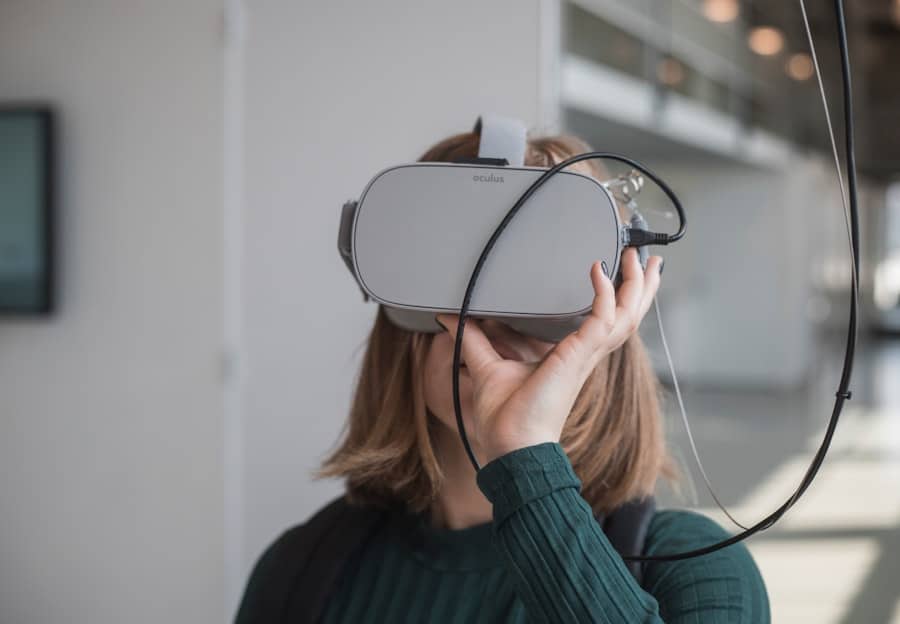Virtual reality (VR) has emerged as a transformative technology across various sectors, and event planning is no exception. This immersive technology allows planners to create engaging experiences that transcend the limitations of physical venues. By simulating real-world environments, VR enables event organizers to visualize layouts, design interactive experiences, and engage attendees in ways that were previously unimaginable.
The integration of VR into event planning not only enhances creativity but also provides a platform for innovation, allowing planners to push the boundaries of traditional event formats. As the demand for unique and memorable experiences grows, event planners are increasingly turning to VR to meet these expectations. The ability to transport attendees to different locations or create entirely new environments opens up a world of possibilities.
Whether it’s a corporate conference, a product launch, or a social gathering, VR can elevate the experience by making it more interactive and personalized. This article delves into the multifaceted role of virtual reality in event planning, exploring its benefits, tools, successful implementations, challenges, and future prospects.
Key Takeaways
- Virtual reality (VR) is revolutionizing event planning by offering immersive and interactive experiences for both event organizers and attendees.
- Using VR in event planning can lead to cost savings, increased attendee engagement, enhanced event visualization, and improved event execution.
- Various VR tools and platforms, such as Oculus Rift, HTC Vive, and Google Cardboard, are available for event planners to create and showcase virtual event spaces.
- VR enhances event execution by allowing for virtual site visits, real-time event adjustments, and personalized attendee experiences.
- Case studies demonstrate successful implementation of VR in event planning, including virtual trade shows, product launches, and virtual event tours, showcasing the potential of VR in the industry.
The Benefits of Using Virtual Reality in Event Planning
One of the most significant advantages of incorporating virtual reality into event planning is the enhanced engagement it offers. Traditional events often struggle to capture and maintain attendee interest, especially in an age where distractions are abundant. VR provides an immersive experience that captivates participants, allowing them to interact with the environment and content in a meaningful way.
For instance, attendees can explore a virtual exhibition space at their own pace, engaging with exhibits through interactive elements that provide deeper insights into products or services. Moreover, VR facilitates remote participation, breaking down geographical barriers that often limit attendance at events. With the rise of hybrid events—where physical and virtual components coexist—VR allows individuals from around the globe to join in without the need for travel.
This inclusivity not only broadens the audience base but also enhances networking opportunities, as participants can connect with others in a virtual space that mimics real-life interactions. The ability to host large-scale events without the constraints of physical venues is a game-changer for planners looking to maximize reach and impact.
Virtual Reality Tools and Platforms for Event Planning

The landscape of virtual reality tools and platforms is rapidly evolving, providing event planners with a plethora of options to choose from. Software solutions like Oculus for Business and vSpatial offer comprehensive environments for creating and managing virtual events. These platforms enable planners to design custom virtual spaces that reflect their brand identity while incorporating interactive features such as live streaming, chat functions, and gamification elements.
The flexibility of these tools allows for tailored experiences that can cater to specific audience needs. In addition to dedicated VR platforms, there are also general-purpose tools that can be adapted for event planning. For example, platforms like Unity and Unreal Engine are widely used in game development but have found applications in creating immersive event experiences.
Furthermore, advancements in mobile VR technology have made it easier for attendees to access virtual events using their smartphones, broadening the potential audience even further.
How Virtual Reality Enhances Event Execution
The execution of events can be significantly enhanced through the use of virtual reality by streamlining logistics and improving overall attendee experience. For instance, VR can be utilized during the planning phase to visualize venue layouts and seating arrangements before any physical setup occurs. This capability allows planners to identify potential issues early on, such as overcrowding or poor sightlines, enabling them to make adjustments proactively rather than reactively.
During the event itself, VR can serve as a powerful tool for engagement. For example, interactive VR experiences can be integrated into product launches or trade shows, allowing attendees to interact with products in a simulated environment. This not only provides a unique experience but also allows for deeper product understanding through hands-on interaction.
Additionally, VR can facilitate real-time feedback collection through interactive surveys or polls conducted within the virtual space, providing valuable insights that can inform future events.
Case Studies: Successful Implementation of Virtual Reality in Event Planning
Several organizations have successfully harnessed the power of virtual reality in their event planning efforts, showcasing its potential across various industries. One notable example is the 2020 Consumer Electronics Show (CES), which pivoted to a fully virtual format due to the COVID-19 pandemic. Utilizing VR technology, CES created an immersive online experience that allowed attendees to explore virtual booths and interact with exhibitors in real-time.
This innovative approach not only maintained engagement but also attracted a global audience that may not have been able to attend the physical event. Another compelling case study is the use of VR by the automotive industry during product launches. For instance, Audi has employed virtual reality to unveil new models by allowing potential customers to experience the vehicle’s features in a simulated environment before it hits the showroom floor.
Attendees can take virtual test drives or explore intricate details of the car’s design and technology from the comfort of their homes. This approach not only generates excitement around new releases but also provides valuable data on consumer preferences and behaviors.
Challenges and Limitations of Virtual Reality in Event Planning

Despite its numerous advantages, the integration of virtual reality into event planning is not without challenges. One significant hurdle is the technological barrier that may exist for some attendees. While VR headsets have become more accessible, not everyone may have access to the necessary equipment or possess the technical know-how to navigate virtual environments effectively.
This limitation can lead to feelings of exclusion among those who are unable or unwilling to engage with VR technology. Additionally, there are logistical challenges associated with implementing VR at events. High-quality VR experiences often require substantial investment in hardware and software development, which may not be feasible for all organizations.
Furthermore, ensuring a seamless user experience is critical; technical glitches or connectivity issues can detract from the overall experience and frustrate attendees. Event planners must carefully consider these factors when deciding how extensively to incorporate VR into their events.
The Future of Virtual Reality in Event Planning
Looking ahead, the future of virtual reality in event planning appears promising as technology continues to advance and become more integrated into everyday life. As VR hardware becomes more affordable and user-friendly, it is likely that adoption rates will increase among both planners and attendees. Innovations such as augmented reality (AR) could also complement VR experiences by providing additional layers of interactivity and engagement during events.
Moreover, as data analytics capabilities improve, event planners will be able to leverage insights gained from virtual experiences to refine their strategies further. Understanding attendee behavior within virtual environments can inform decisions about content delivery, layout design, and engagement tactics for future events. The potential for personalization will also grow; as AI technologies evolve, planners may be able to create tailored experiences based on individual preferences and past interactions.
Embracing Virtual Reality for Successful Event Planning and Execution
The integration of virtual reality into event planning represents a significant shift in how experiences are designed and executed. By embracing this technology, planners can create immersive environments that captivate audiences and foster deeper connections between brands and attendees.
As we move forward into an increasingly digital world, the role of virtual reality in event planning will likely continue to grow. By staying abreast of technological advancements and adapting strategies accordingly, event planners can harness the full potential of VR to deliver unforgettable experiences that resonate with audiences long after the event concludes.
If you are interested in learning more about the latest technology trends, you may want to check out What is Special About the iPhone 14 Pro. This article discusses the unique features and capabilities of the iPhone 14 Pro, which could have implications for event planning and execution. Additionally, if you are looking for software to help with project management for your events, you may find Best Software for Project Management to be a helpful resource. This article highlights some of the top project management tools available on the market. Lastly, if you are curious about the difference between a graphic tablet and a drawing tablet, you can read What is the Difference Between a Graphic Tablet and a Drawing Tablet to gain a better understanding of these devices and how they can be used in event planning and design.
FAQs
What is virtual reality (VR) and how does it work?
Virtual reality (VR) is a computer-generated simulation of an environment that can be interacted with in a seemingly real or physical way. VR works by using headsets and motion-tracking technology to immerse users in a 3D environment.
How is virtual reality transforming event planning?
Virtual reality is transforming event planning by allowing event organizers to create immersive and interactive experiences for attendees. It enables them to visualize and plan event spaces, design virtual walkthroughs, and showcase event setups in a realistic and engaging manner.
How is virtual reality transforming event execution?
Virtual reality is transforming event execution by providing a platform for virtual events and conferences. It allows attendees to participate in events from anywhere in the world, interact with others in a virtual environment, and experience presentations and demonstrations in a more engaging way.
What are the benefits of using virtual reality in event planning and execution?
The benefits of using virtual reality in event planning and execution include cost savings on physical setups, increased attendee engagement, the ability to reach a wider audience through virtual events, and the opportunity to create unique and memorable experiences for attendees.
What are some examples of virtual reality being used in event planning and execution?
Examples of virtual reality being used in event planning and execution include virtual event platforms that host conferences and trade shows, virtual reality tours of event venues for potential clients, and virtual reality simulations for event staff training and preparation.

